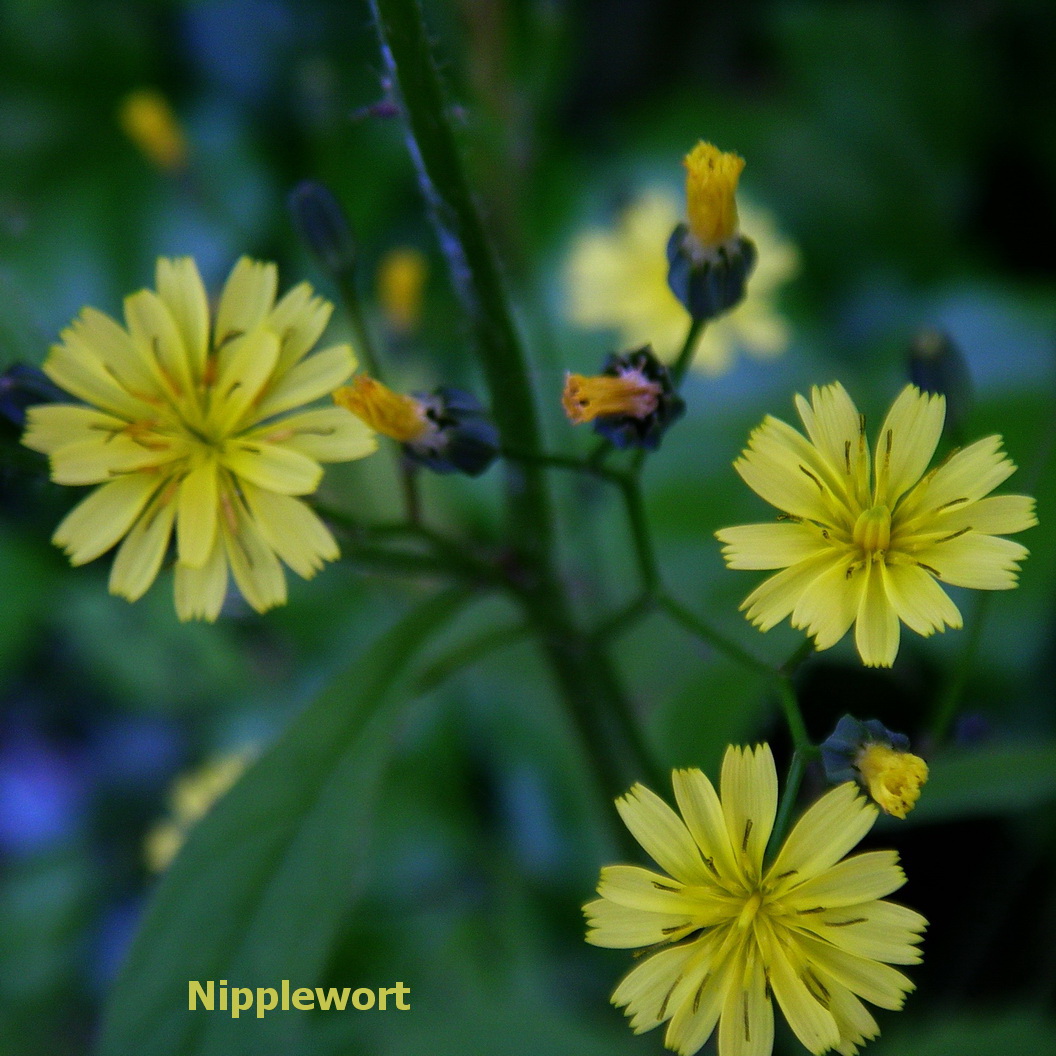I just finished the Herb Robert and now the Nipplewort is starting to bloom. The Wall Lettuce won’t be far behind. It’s impossible to keep up with weeds this time of year.
Nipplewort and Wall Lettuce grow rampant in unmowed roadsides, neglected edges, and vacant parcels. Their fluffy, dandelion-like seeds scatter widely, germinate prolifically, and grow quickly up to 4’ high. Over the winter, the stalks turn brown and persist until spring. (Nipplewort is an annual, but Wall Lettuce can overwinter and bloom again. One source calls it an annual/biennial; another a “short-lived” perennial.)
One can argue, that when they take over disturbed ground, these patches of weeds are an asset — preserving the soil, adding leaf litter, and helping natural succession. Under the shaded canopy of the forest, scattered Nipplewort and Wall Lettuce cause no real harm and are in no danger of crowding out Sword Fern, Oregon Grape, or Salal. Here, their removal may be strictly aesthetic. On the other hand, their removal helps less-aggressive native plants gain footing (e.g. Starflower, Foam Flower, and Candy Flower).
The ideal strategy for controlling both Nipplewort and Wall Lettuce is to remove them during that very brief period between the initial shooting-up of the flower stalks and emergence of the flower buds. When I try to pull them prior to that, I often end up with a handful of leaves and leaf stems but no roots. If pulled after budding, it’s best to bag and trash the budding/flowering tops of the plants (or use a yard-waste disposal bin), and compost only the leafy/rooty bottoms. Prior to budding, they can be composted or added to the leaf litter (roots not touching soil) without risking they will go to seed lying there.
Look-Alike Natives
White-Flowered Hawkweed and Pathfinder have similar habits and structure to Nipplewort and Wall Lettuce. Before flowering, White-Flowered Hawkweed can be identified by its very fuzzy stems and elongated basal leaves; Pathfinder by the triangular shape of its leaves and their almost-white undersides. Both of these natives have white flowers whereas the non-native Nipplewort and Wall Lettuce have yellow. (The native with yellow flowers that I see most often is Large-Leaved Avens.)
